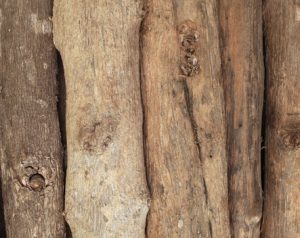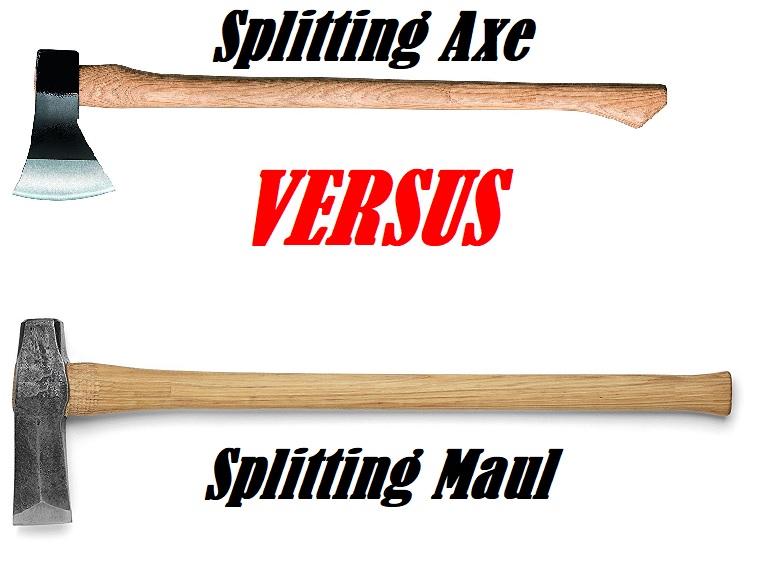I hope you love the products I've recommended below, just a heads up that as an Amazon associate, I earn from qualifying purchases. This means I may earn commissions on products bought via links on this page.
 Splitting wood is an important part of making firewood. Large logs are too unwieldy to handle and to lay in a fireplace in a way that will burn efficiently. Different kinds of wood respond in different ways. Some woods will split more easily when they are dry and brittle such as certain varieties of pine. Some on the other hand, will split more easily when they are green. Live oak is a prime example of timber that can be split while green.
Splitting wood is an important part of making firewood. Large logs are too unwieldy to handle and to lay in a fireplace in a way that will burn efficiently. Different kinds of wood respond in different ways. Some woods will split more easily when they are dry and brittle such as certain varieties of pine. Some on the other hand, will split more easily when they are green. Live oak is a prime example of timber that can be split while green.
When people ask ‘can you split green wood’, the general concern is the fact that some woods are very soft and supple when green. This can often make them very hard to work with and rather un-inviting to swing an axe at. That is unless you own one of the top rated axes of all time.
If you do split green wood, then it is important that you let it dry before you burn it. While wood will burn when it is not dry, it won’t have as efficient a heating potential, because some of the heat will be wasted evaporating moisture from the wood.
So yes while you can split green logs,with certain types of wood the splitting becomes a lot easier. Green wood is typically much cheaper to buy than seasoned firewood. So at the end of the day you have to weigh up the costs and work out whether green wood is the right avenue for you.
Splitting Green Wood Is Easier With A Log Splitter – Find Out More Here
Before You Start Splitting Green Wood
Safety First Guys And Gals
When splitting wood, it’s important that you wear gloves on your hands and steel capped boots on your feet. Don’t try and be a hero here, it is not worth it. If you are using a wedge combined with a sledge hammer to spit the timber then it’s important to also wear safety glasses. There is too much risk of pieces of wood potentially flying up and hitting your eyes. Cutting dry seasoned wood has the increased chances of splinters digging into your hands, arms etc. So wearing gloves is always the best practice.
Before you start splitting wood, cut the logs down into what are known as rounds. These are a more manageable length of wood. Remember with longer rounds, the harder they will be to split it open. Most people practice on 12 inch lengths, but you can use longer rounds if you are confident. But 12 inches is a good starting point. Try to work with wood free from knots, because the knots can be stubborn and hard to split.
What Tools To Use For Splitting Green Logs
A traditional tool for splitting wood is a ‘wood splitter’s maul’, compared to the common household axe. A maul is, essentially, just a wedge accompanied by a handle. The wedge design/shape has a steep slope which means that it will not be as prone to sticking in the wood. Axe heads have a gentler slope. It is possible to split wood with an axe, but it will be harder work. The steeper edge of the maul will make the wood split more easily because it generates outward pressure. This is particularly important with green wood that is a little more flexible.
If you have tough wood that is not easy to split, then you can use wedges and a sledge hammer. Try to use the maul whenever possible though, because the process of putting the wedge in position and striking it with the hammer will take up more time.
What Size Maul?
Contrary to popular belief, lighter mauls are more efficient than heavier ones, because you can swing them faster. When it comes to splitting wood, it is the velocity of the head that matters. Energy is rather equivalent to the square of the velocity of an object, and a fast maul head will generate more energy than a heavy one. Unless you are very strong, you will work more efficiently with a lighter maul.
It helps if you can be elevated slightly compared to the wood that you are splitting, to maximize the leverage that you benefit from. Place the round on a level, hard surface, so that all of the energy goes straight into the wood. Deliver the blow towards the outer edge of the round, so that the head of the maul hits at an angle to the growth rings. This makes it easier to complete the split.
How To Split Green Wood
To swing, stand with your feet about shoulder width apart, and directly facing towards the round. You should be positioned so that you will strike the found in exactly the right place when your arms are fully extended, and you are slightly bent over. Position the maul at roughly waist level with your elbows bent, and with one hand towards the bottom of the handle with your palms facing towards you , while the other is at the other end of the maul. Position your thumb next to the maul head. Changing hands and positions can relieve the strain of swing the maul.
Bend your knees slightly, lean over slightly, and lift the maul high over your head. Extend your arms high, and straighten yourself up tall, then allow your hand to gently move lower on the handle. At the peak of the swing, begin a strong downswing, focusing on the intended point of impact. Right before the head of the maul hits the wood, pull the maul in towards yourself slightly. This should produce a strong and forceful blow that hits exactly where you want it to on the round of wood.






